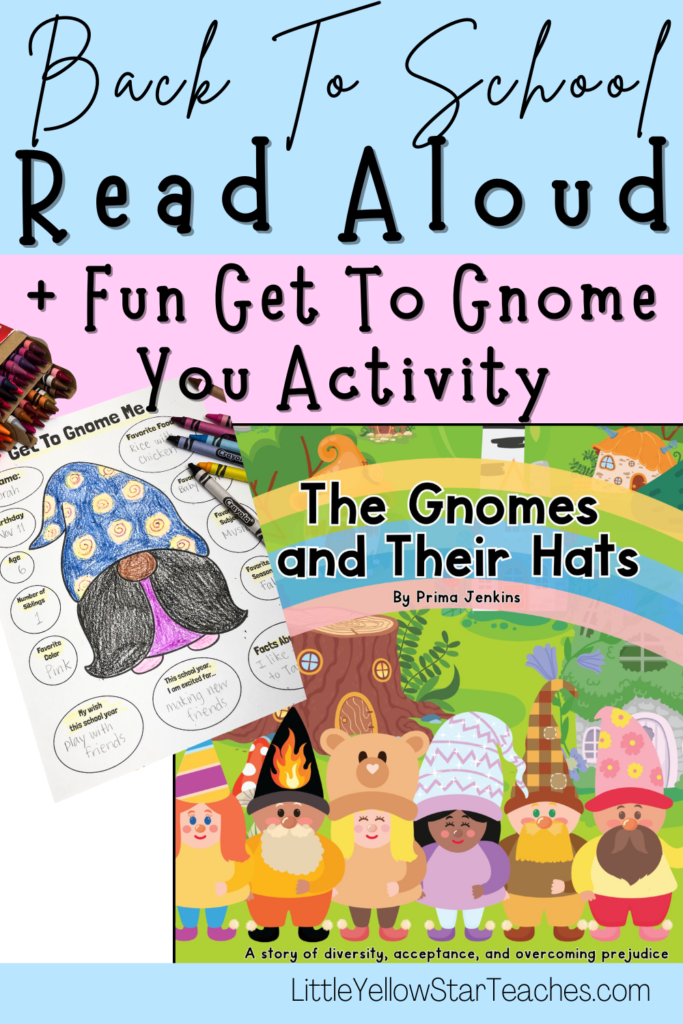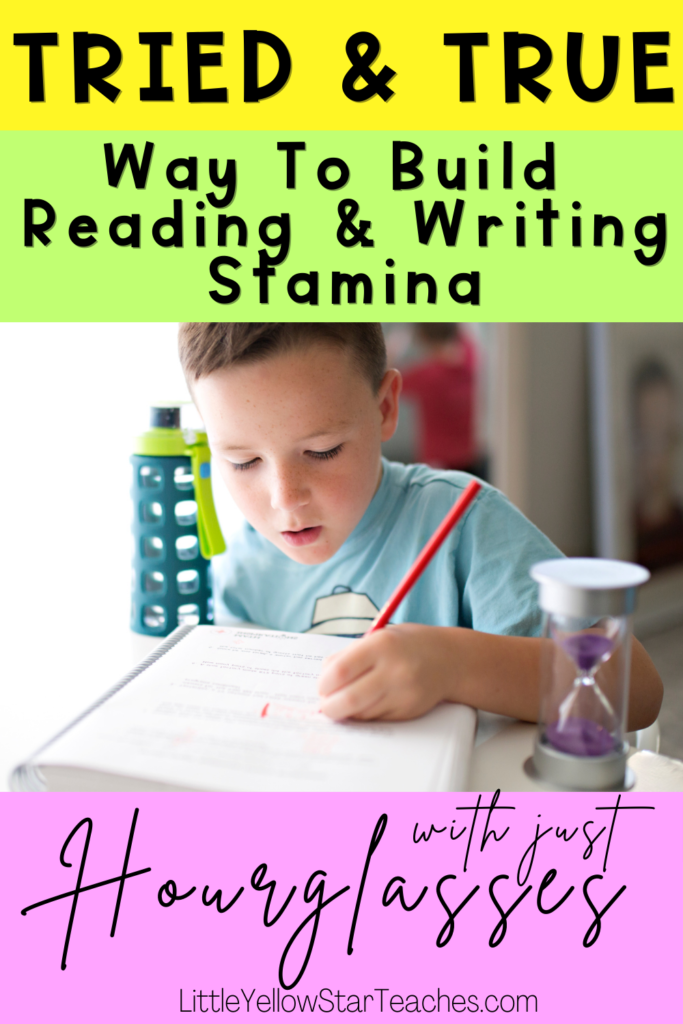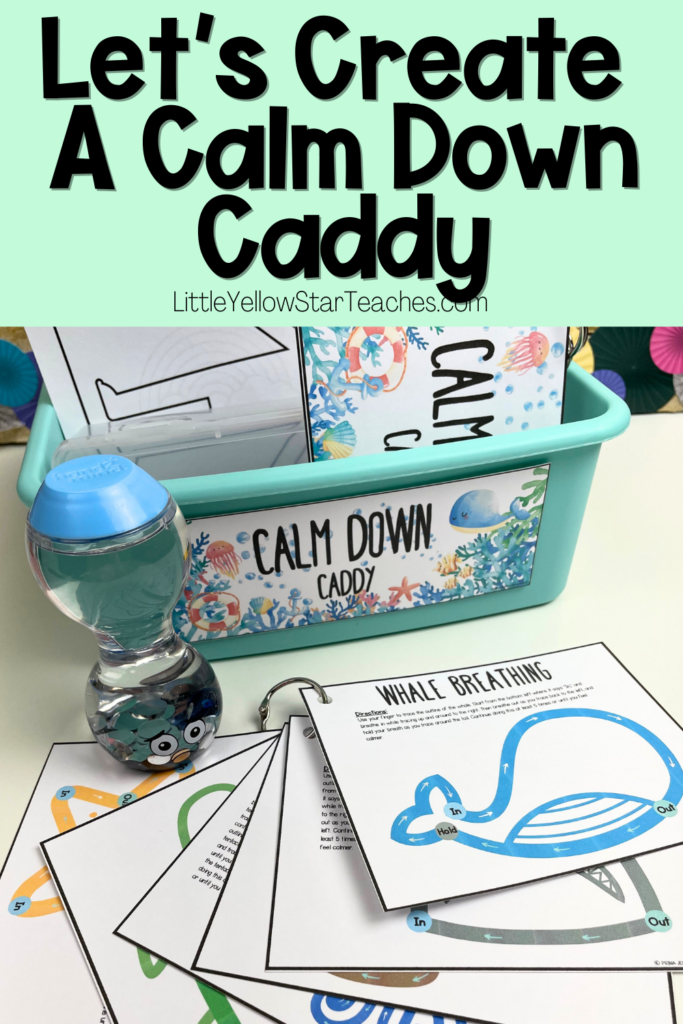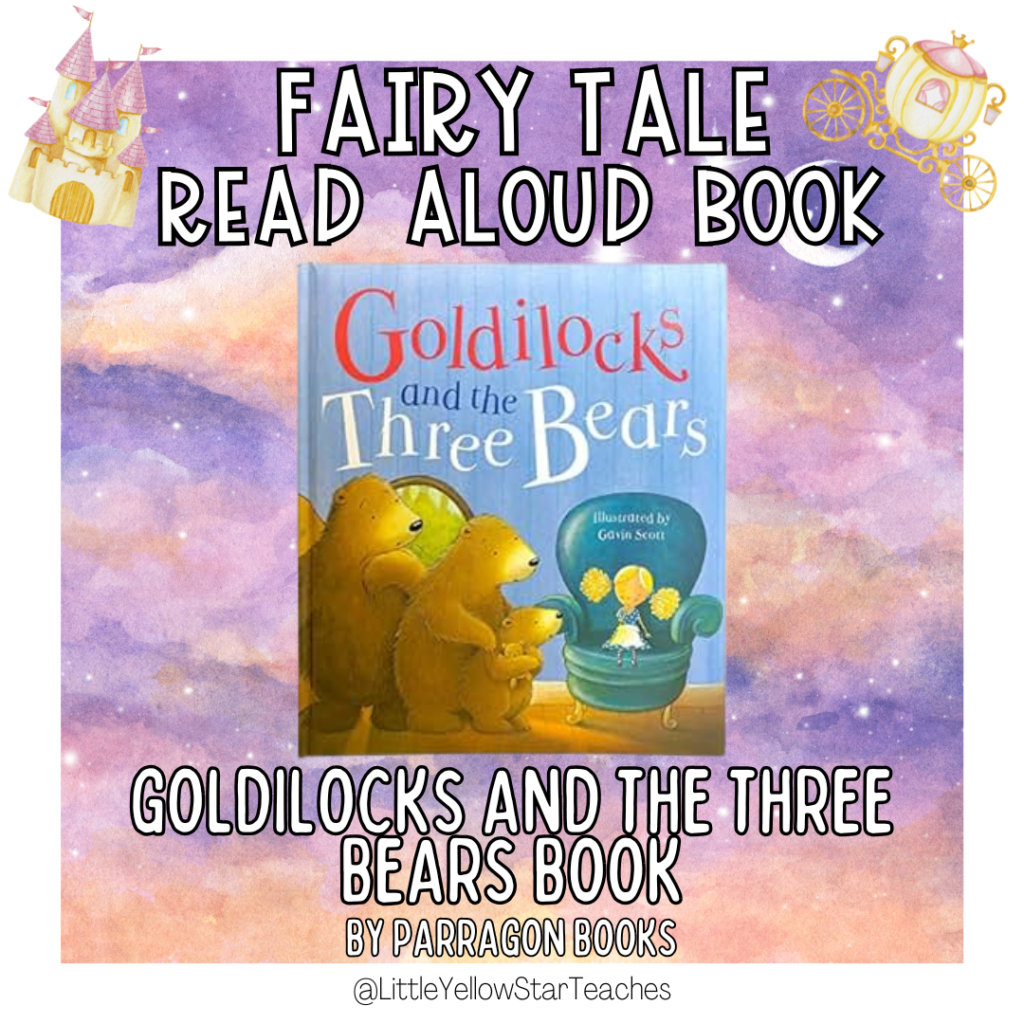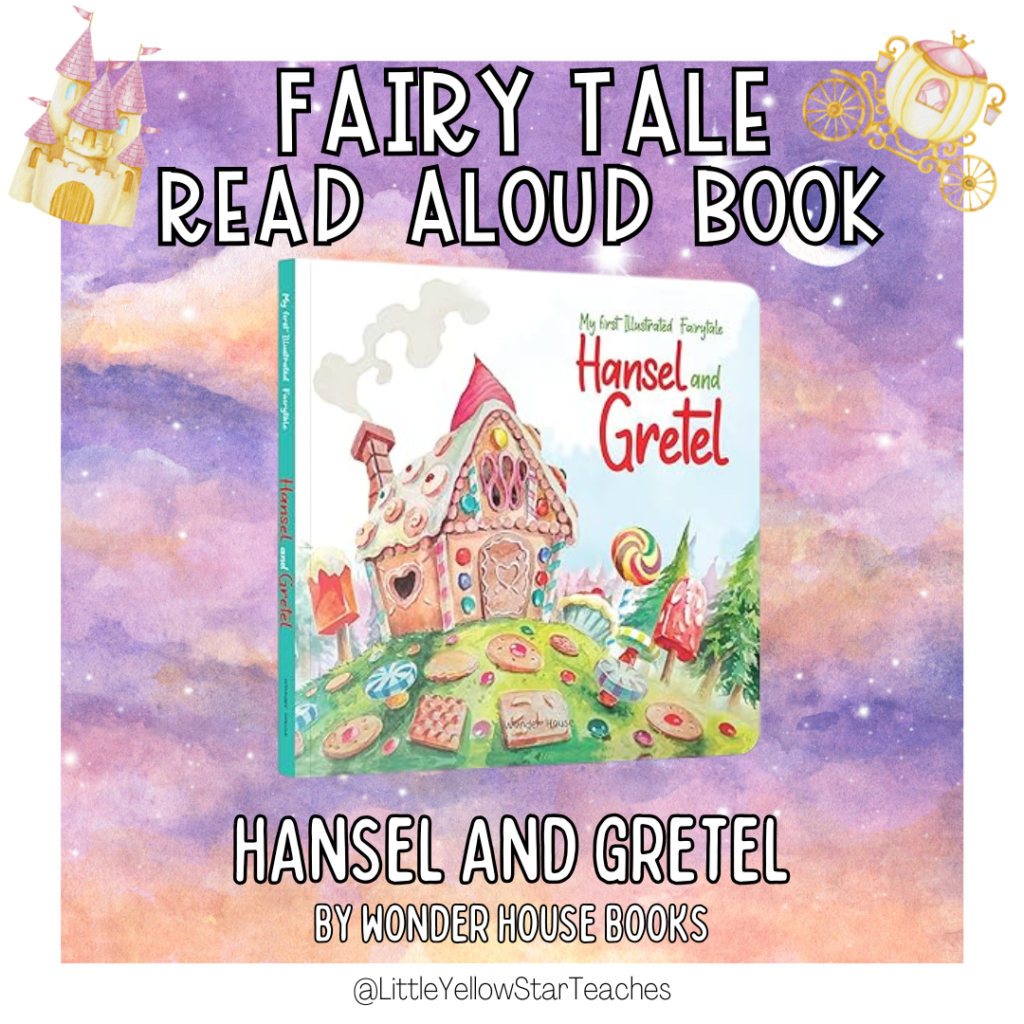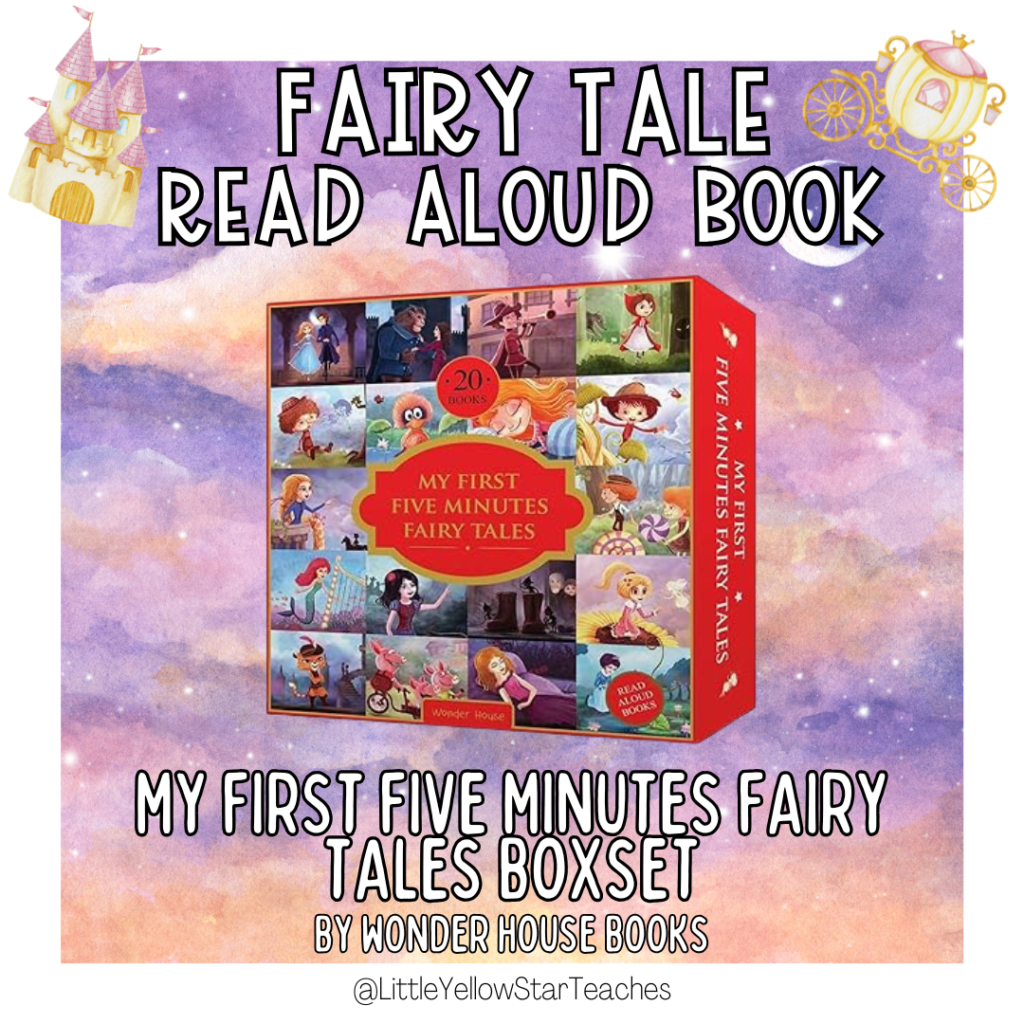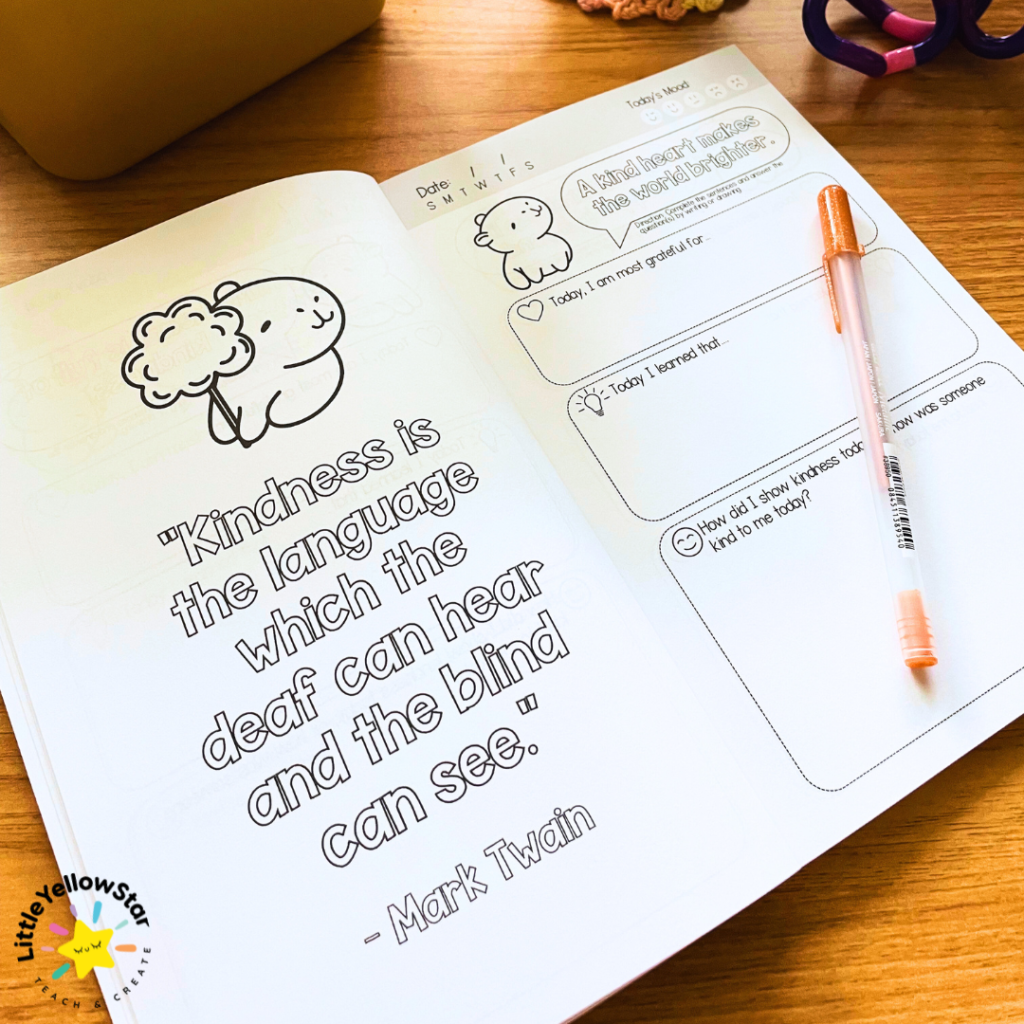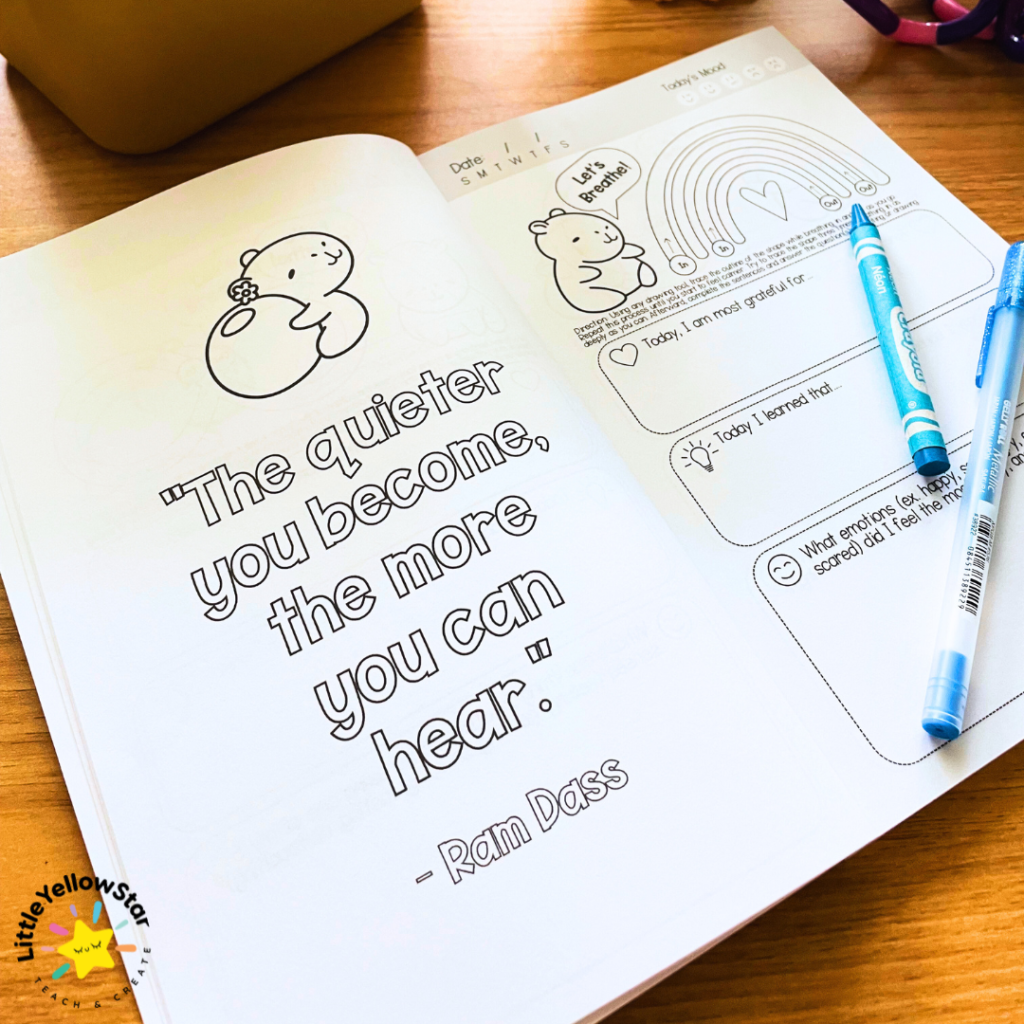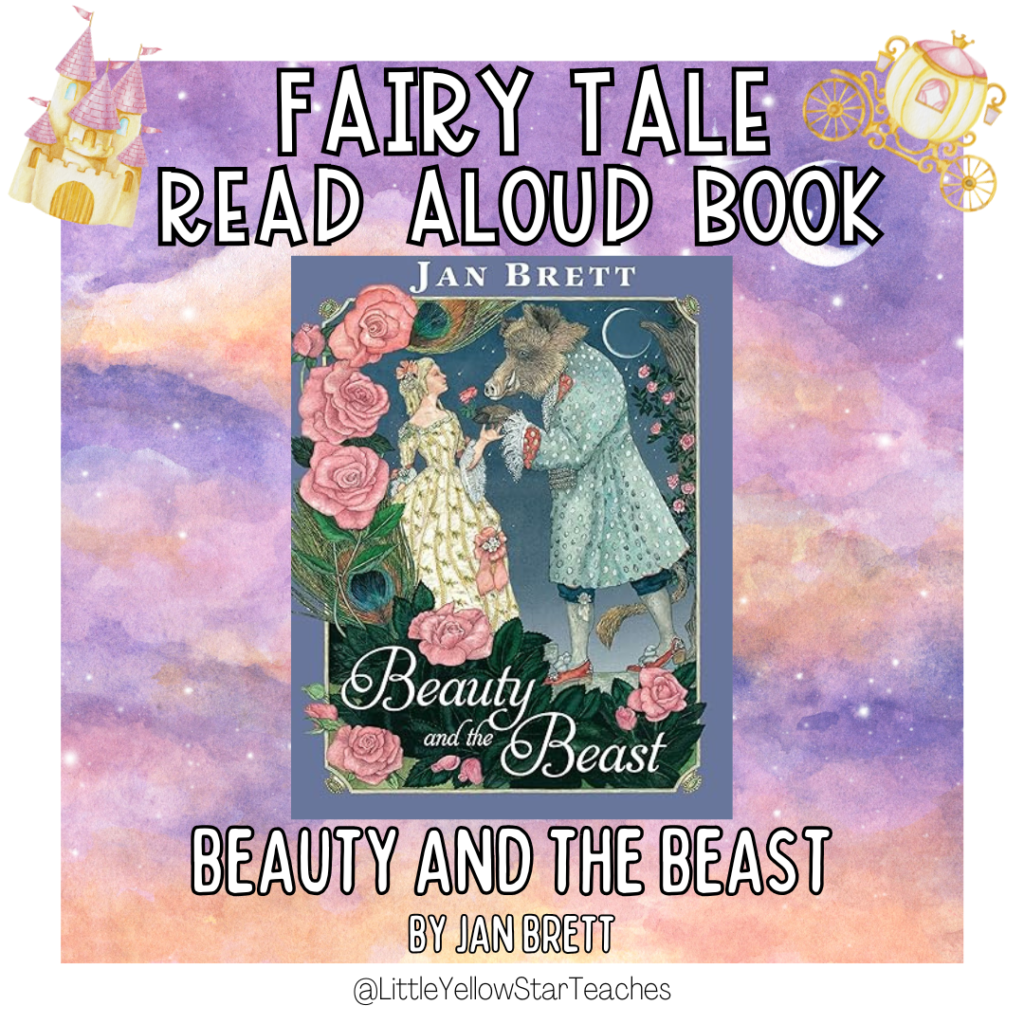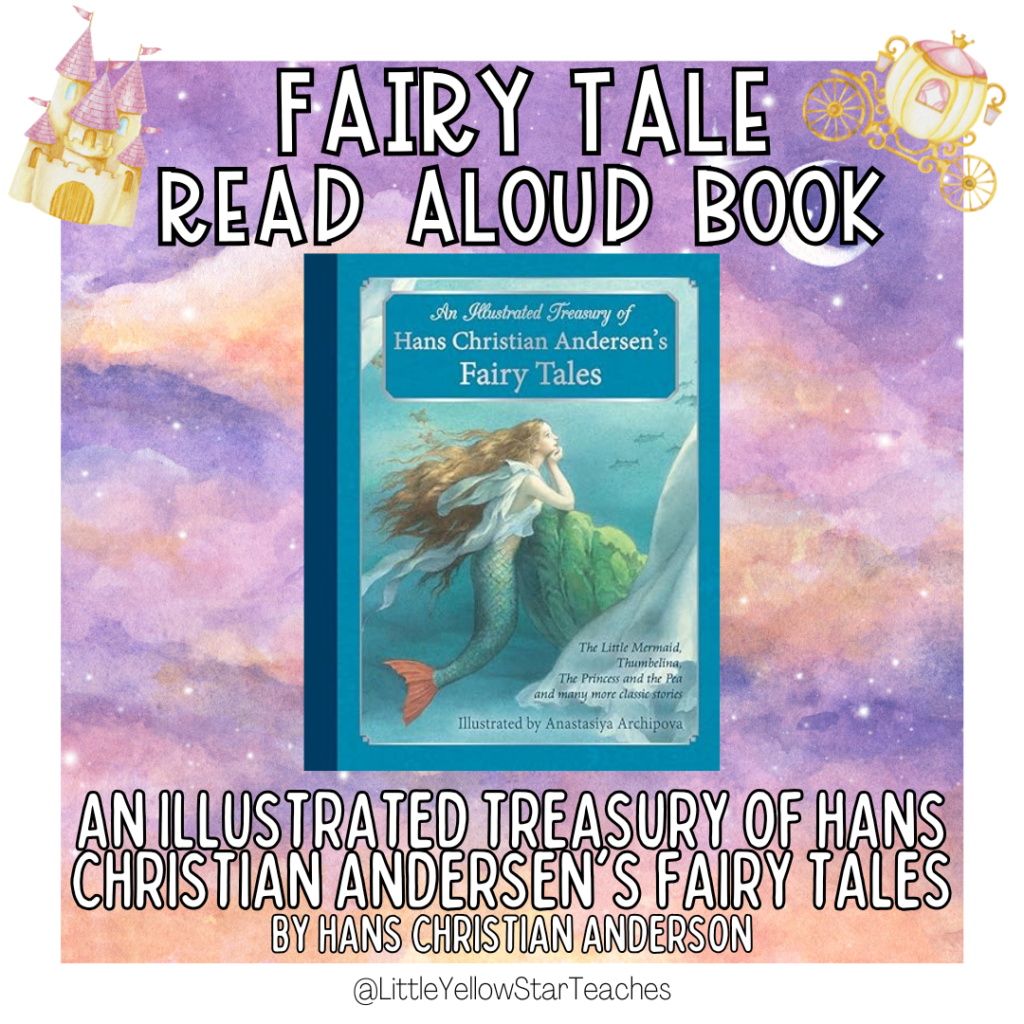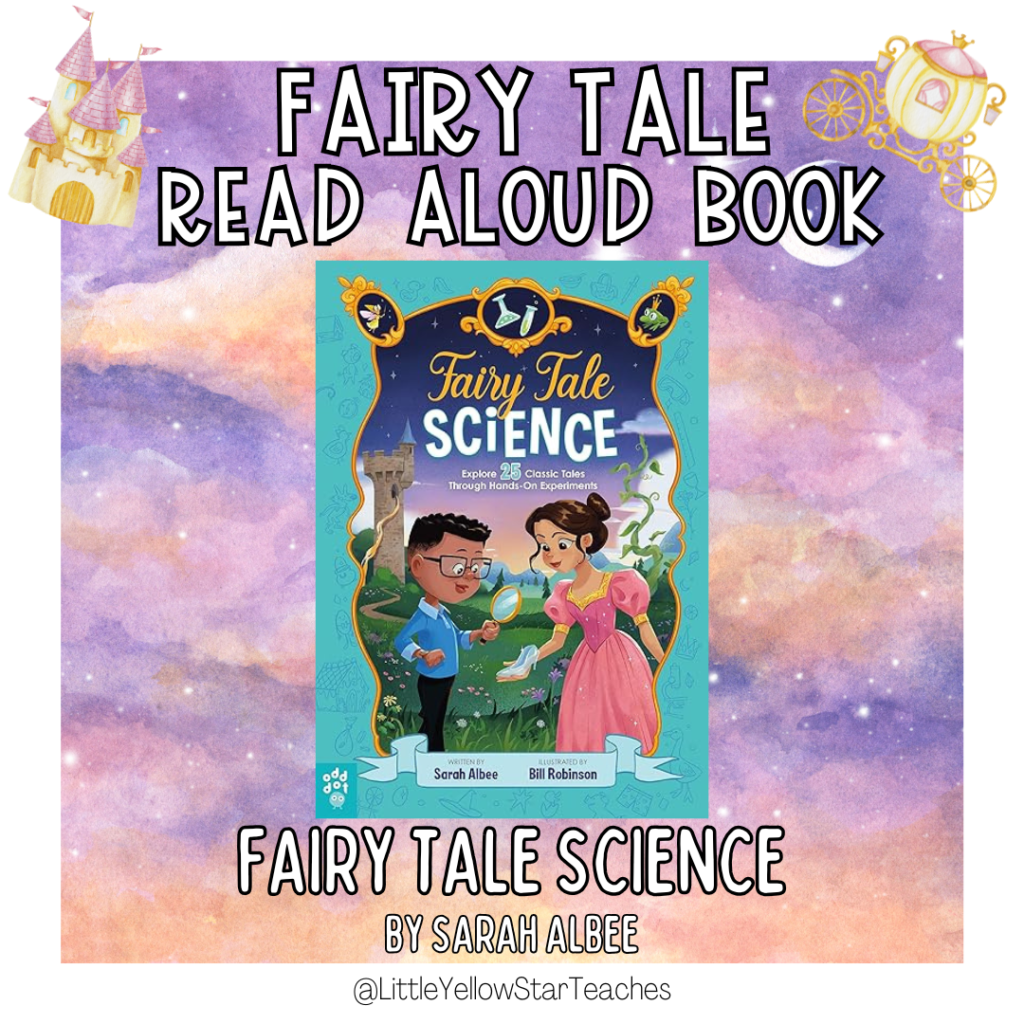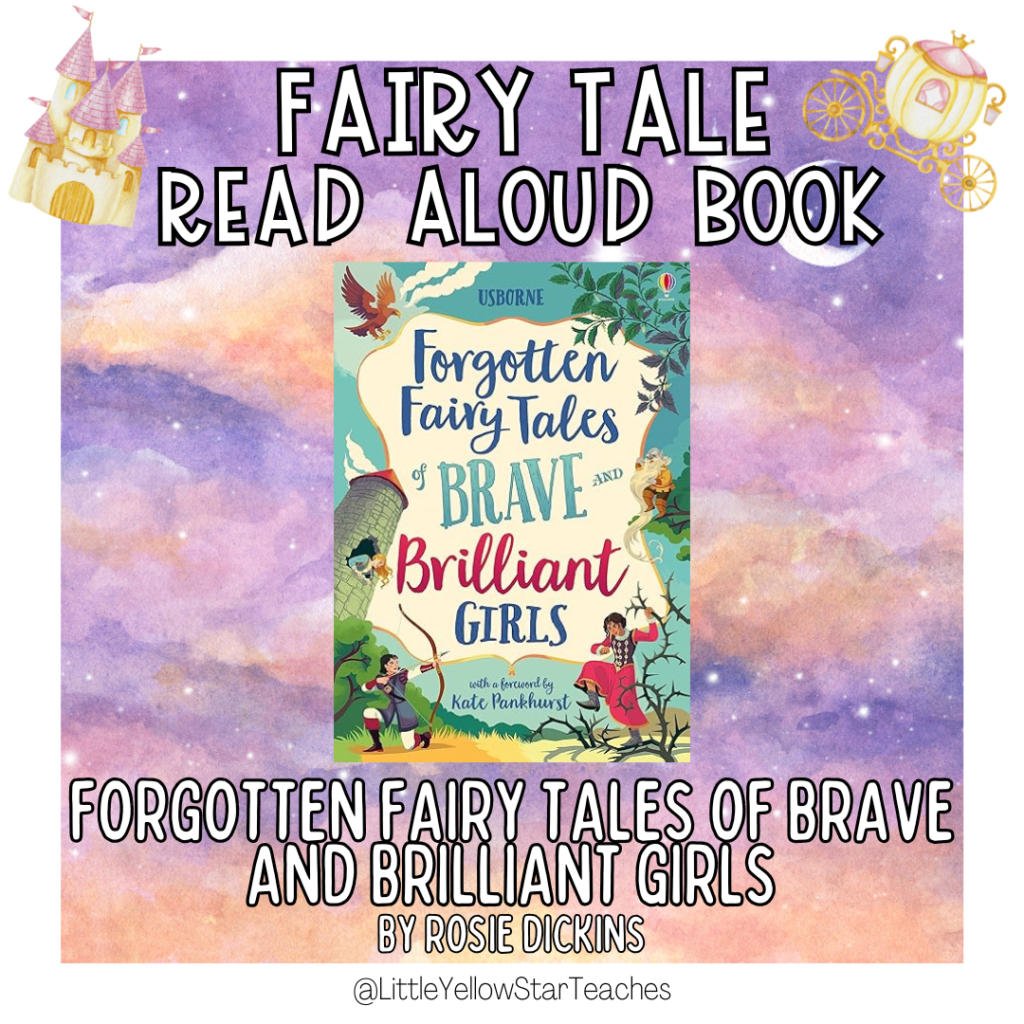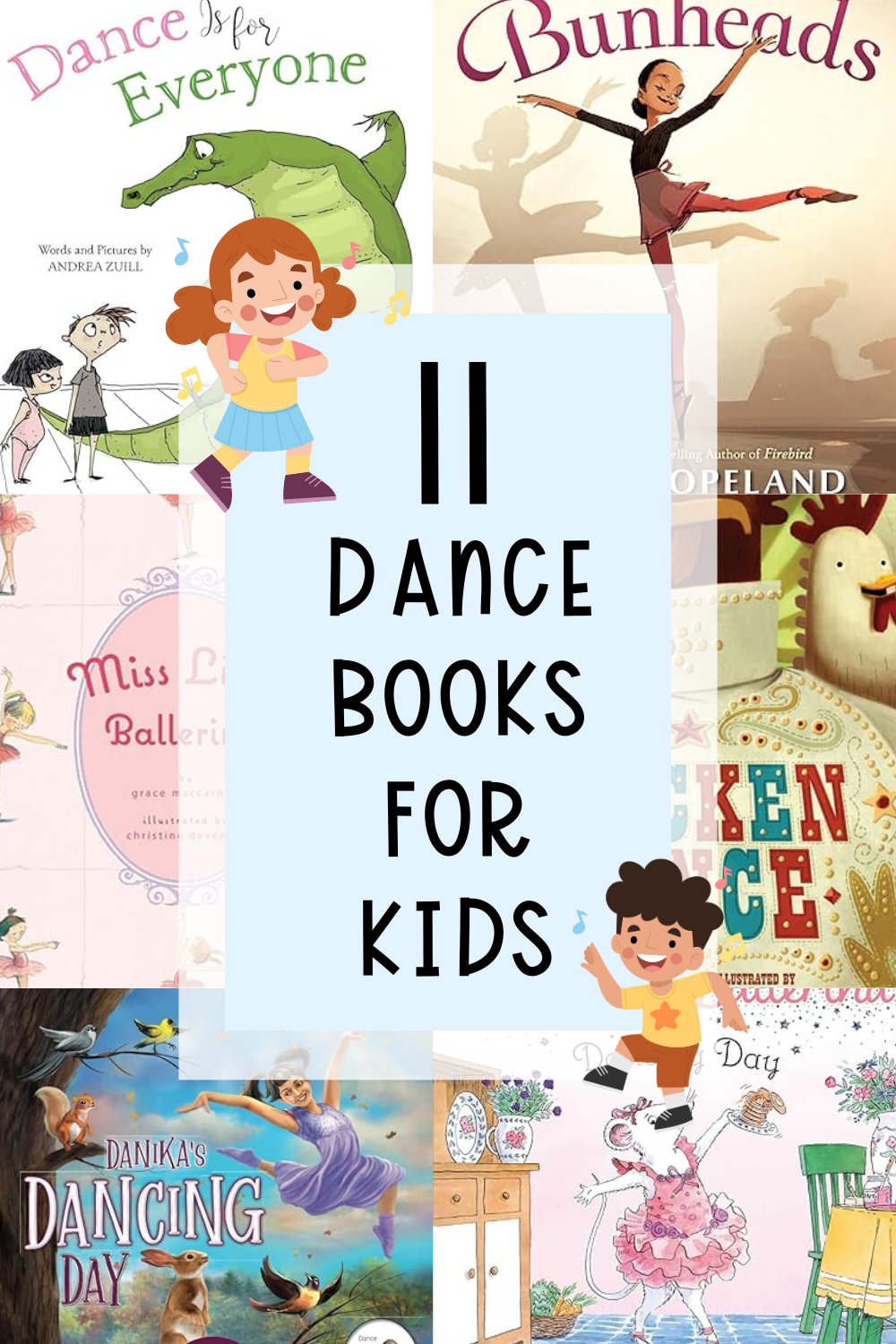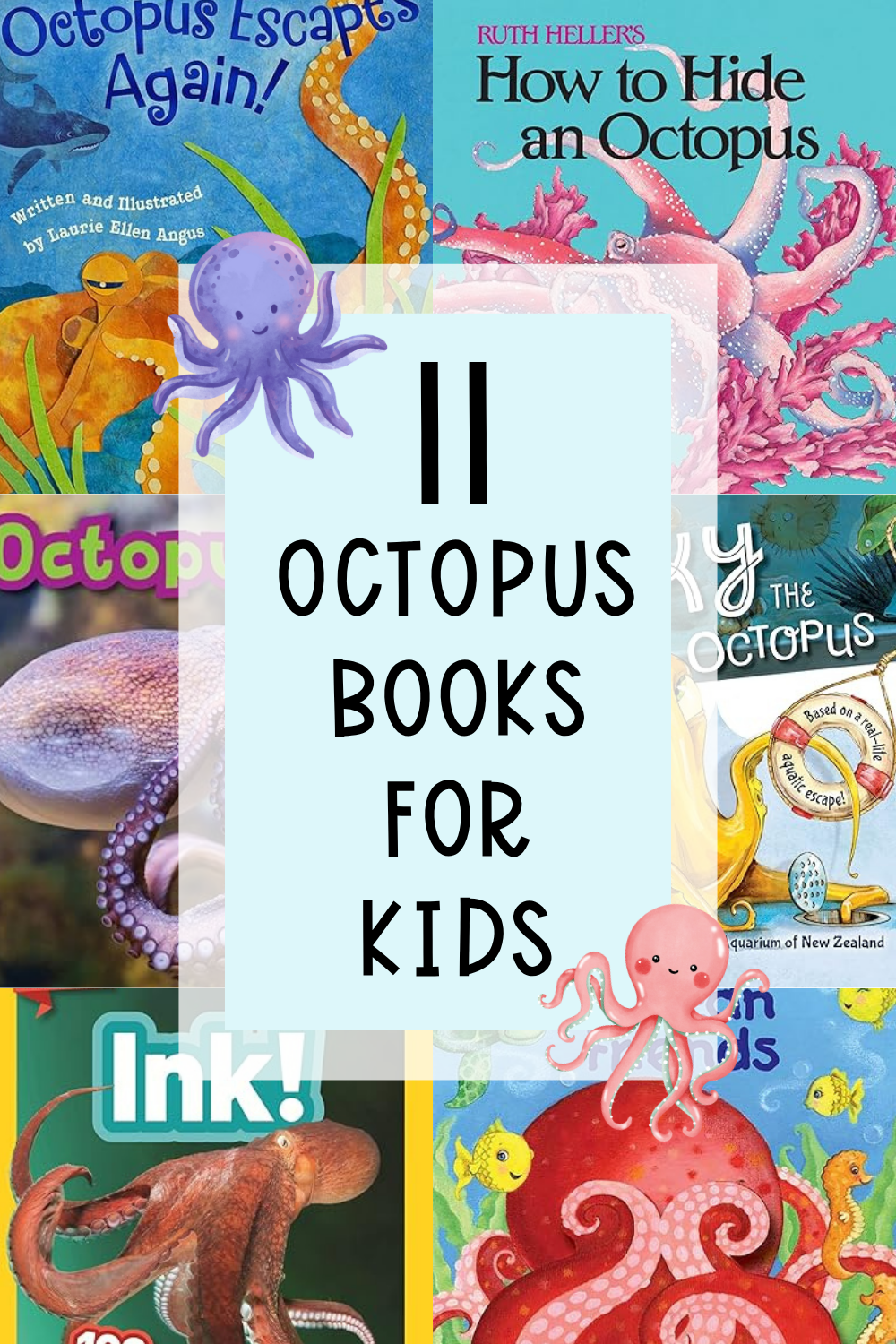***Disclosure: This post contains an Amazon affiliate link that at no additional cost to you, I may earn a small commission when you purchase through the link from my blog. Thank you for your support!
Fairy tales have captivated children for centuries. With brave heroes, clever heroines, magical creatures, and faraway kingdoms, fairy tales offer more than fantasy—they offer life lessons wrapped in wonder. These classic (and fractured!) stories help kids explore big themes like good vs. evil, courage, kindness, and imagination.
In this post, I’m sharing my favorite fairy tale books for kids, organized by age group. I’ve also included fun extension activities and discussion questions to inspire magical thinking and meaningful conversations. Let me know which fairy tale book your child enjoys the most!
Table of Content
- Why Read Books About Fairy Tales?
- The Role of Books in Teaching Kids about Fairy Tales
- 11 Fairy Tale Books For Children
- What Fairy Tale Book(s) Are You Going To Read Later?
Why Read Books About Fairy Tales?
Fairy tales transport children into magical worlds where dragons roam, spells are cast, and anything is possible.
These stories stretch the imagination while introducing familiar storytelling structures, patterns, and archetypes that kids love to recognize. They’re full of adventure, mischief, and “happily ever afters”—but also teach important values like kindness, bravery, honesty, and perseverance.
Fairy tales encourage children to dream big, believe in themselves, and understand that even the smallest characters can create great change.
The Role of Books in Teaching Kids about Fairy Tales
Fairy tales aren’t just fun—they help build literacy, critical thinking, and emotional development.
Children learn to identify themes, recognize story elements, and compare versions of the same tale across cultures. They also get to explore deeper questions: What makes someone a hero? What is fairness? How do we use courage to face challenges?
Modern and fractured fairy tales add fresh twists and new perspectives, helping children think creatively and understand diverse viewpoints.
How to Use Books about Fairy Tales with Children
Here are a few magical ways to bring fairy tales to life beyond the pages:
- 📖 Ask Open-Ended Questions: After reading, ask: What would you have done in that character’s shoes? or Can you think of a different ending? In the classroom, use Turn and Talk to let kids compare tales or invent new ones.
- 🎨 Engage in Fairy Tale-Themed Activities: Build gingerbread houses like Hansel and Gretel, create crown crafts or fairy tale puppets, or act out your own version of a favorite story. Encourage kids to write or illustrate a modern fairy tale starring themselves!
- 📚 Refer Back to the Books: During story retelling, dramatic play, or SEL moments, bring in fairy tale characters or themes. For example, if a student shows bravery or kindness, relate it to a character like Cinderella, Jack, or Red Riding Hood.
- 👨👩👧 Involve Other Caregivers: Invite families to share their favorite fairy tales from their own childhoods or cultures. These rich storytelling traditions deepen connection and appreciation for stories across the world.
11 Fairy Tale Books For Children
Younger Children (Ages 3-6)
#1 “Lift the Flap: Fairy Tales” by Roger Priddy
This interactive board book invites children to explore classic fairy tales by lifting flaps to discover hidden characters and surprises.
Thematic Insights: Encourages curiosity and engagement with storytelling through interactive elements, making classic tales accessible to young readers.
Activity Suggestion: Create Your Own Flap Book – Kids can draw a fairy tale scene and glue paper flaps over hidden characters or objects.
Discussion Questions:
- Which fairy tale was your favorite in the book?
- What surprised you when you lifted the flaps?
- How do the pictures help you understand the story?
#2 “Goldilocks and the Three Bears” by Parragon Books
A retelling of the classic tale where Goldilocks enters the house of three bears, trying out their porridge, chairs, and beds, leading to unexpected consequences.
Thematic Insights: Highlights respect for others’ property, understanding boundaries, and learning from mistakes.
Activity Suggestion: Role-Playing – Act out the story, taking turns as Goldilocks and the bears to explore feelings and consequences.
Discussion Questions:
- What could Goldilocks have done differently?
- How would you feel if someone used your things without asking?
- What lesson can we learn from Goldilocks’ experience?
#3 “Hansel and Gretel” by Wonder House Books
Hansel and Gretel, lost in the forest, discover a house made of sweets inhabited by a witch. They must use their wits to escape and find their way home.
Thematic Insights: Explores courage, sibling teamwork, and using cleverness to overcome danger.
Activity Suggestion: Candy House Craft – Use graham crackers and candy to build your own version of the witch’s house.
Discussion Questions:
- How did Hansel and Gretel work together to escape?
- Why is it important to be cautious of strangers?
- What does this story teach us about bravery?
Lower Elementary Children (Ages 7-9)
#4 “My Favorite Fairy Tales Collection: 8 Magical Stories!” by Nina Filipek
A collection of eight classic fairy tales, including “Cinderella,” “Jack and the Beanstalk,” and “The Three Little Pigs,” each retold with vibrant illustrations.
Thematic Insights: Offers moral lessons on perseverance, kindness, cleverness, and the rewards of hard work.
Activity Suggestion: Moral Matching – Match each fairy tale to the life lesson it teaches and discuss as a group.
Discussion Questions:
- Which story did you enjoy most and why?
- What lesson did you learn from one of the tales?
- How did the characters solve their problems?
#5 “My First Five Minutes Fairy Tales Boxset” by Wonder House Books
A set of 20 beautifully illustrated fairy tales designed to be read in five minutes—great for bedtime or quick reads.
Thematic Insights: Introduces moral lessons in bite-sized, engaging stories for early readers.
Activity Suggestion: Daily Storytime – Read one tale a night and reflect on its message.
Discussion Questions:
- What story did you like best today?
- What did you learn from the character’s choices?
- How would you feel if you were in the story?
#6 “Snow White and the Seven Dwarfs” by RH Disney
This classic retelling follows Snow White as she flees from her jealous stepmother and finds refuge with seven kind dwarfs.
Thematic Insights: Reinforces messages of kindness, the dangers of vanity, and true beauty from within.
Activity Suggestion: Kindness Mirror – Make a craft mirror showing kind things about yourself.
Discussion Questions:
- Why did Snow White have to leave the castle?
- What makes someone truly beautiful?
- How did the dwarfs help Snow White?
Check Out Capybara-Theme Daily Reflection Journals For Kids!
#7 “Beauty and the Beast” by Jan Brett
Beauty saves her father by living in the Beast’s castle and learns to see the kindness behind his scary appearance.
Thematic Insights: Teaches compassion, looking beyond appearances, and the strength of love.
Activity Suggestion: Beast Mask Craft – Create a mask and discuss how feelings show on the outside.
Discussion Questions:
- Why did Beauty go to the castle?
- How did her opinion of the Beast change?
- What makes someone truly kind?
Upper Elementary Children (Ages 9-11)
#8 “Arab Fairy Tale Feasts” by Karim Alrawi
This book combines fairy tales from the Arab world with traditional recipes for a cultural and sensory storytelling experience.
Thematic Insights: Celebrates cultural traditions, hospitality, and the connection between food and story.
Activity Suggestion: Cook & Read – Make a simple dish from the book after reading a story.
Discussion Questions:
- What did the characters value in these tales?
- Which recipe or story did you like best?
- How does sharing food bring people together?
#9 “An Illustrated Treasury of Hans Christian Andersen’s Fairy Tales”
This treasury presents stories like The Little Mermaid and The Snow Queen with rich, detailed illustrations.
Thematic Insights: Explores deep themes of identity, sacrifice, and emotional resilience.
Activity Suggestion: Fairy Tale Fortune Teller – Create a paper-folded game using characters and lessons.
Discussion Questions:
- Which character’s journey stood out to you?
- What lesson did they learn?
- How did the illustrations add to the story?
#10 “Fairy Tale Science” by Sarah Albee
This nonfiction twist investigates the science behind fairy tales—like whether Rapunzel’s hair could really support her.
Thematic Insights: Inspires kids to ask questions and combine fantasy with real-world scientific thinking.
Activity Suggestion: Beanstalk Growth Challenge – Grow your own and measure how tall it gets!
Discussion Questions:
- What did you learn about how science works in stories?
- Which experiment surprised you?
- What else would you like to test from a fairy tale?
#11 “Forgotten Fairy Tales of Brave and Brilliant Girls” by Rosie Dickins
This collection celebrates brave and clever girls from lesser-known global fairy tales.
Thematic Insights: Empowers readers with stories of courage, intelligence, and independent heroines.
Activity Suggestion: Create Your Own Heroine – Design a character who saves the day.
Discussion Questions:
- Which girl did you admire most?
- How were these stories different from others you’ve read?
- What makes someone a hero in a fairy tale?
Grab these free resources to make your teaching life easier!
What Fairy Tale Book(s) Are You Going To Read Later?
Fairy tale books for kids are filled with magic, mystery, and meaning. Whether you’re sharing a classic or discovering a new twist on an old favorite, these stories inspire kids to dream, wonder, and learn.
Which fairy tale are you planning to explore next? Tag me on Instagram @LittleYellowStarTeaches and share your favorite fairy tale-inspired art, costumes, or book picks!
Happy reading!
Prima at LittleYellowStar
* * *


